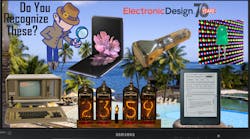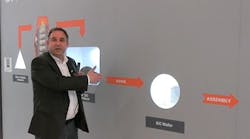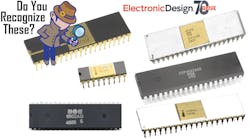|
|
Download this article in .PDF format This file type includes high resolution graphics and schematics when applicable. |
Leading industry analysts at Gartner predict that in five years there will be 25 billion devices connected to the Internet, up tenfold from today.1The rush to become wirelessly connected and join the Internet of Things is escalating, as seen in the steady increase of everyday items adding powerful technology and bringing new functionality and value to consumers. Frombike locksandbasketballstoindoor lighting,toothbrushes, andclothing, the IoT has the potential to be everywhere and in everything, making this a critical time for developers who want to be part of the wave.
Success, however, isn’t guaranteed. Developers must not only make a product that’s different and exciting while staying ahead of the competition, but also ensure it scales to mass production. Add to that the need to get to market quickly in very high volumes and it’s clear developers have a tough job ahead of them.
Think Big
Perhaps the most important factor in successful IoT product development is that every shipped unit must work seamlessly—like magic. The truth, as developers know, is that the wireless technology behind the “magic” is difficult to perfect, and lots of boxes have to be checked along the way to ensure seamless connectivity.
一个我mportant factor in this “magic” is interoperability with other devices. If the device requires any customization of the chipset’s reference design (due to form factor, industrial design, power consumption, geographical frequency allocations, etc.), it can impact RF performance.
Developers don’t have time to reinvent the wheel when it comes to wireless and mass production. Luckily tools such as reference designs are available for everything from chipset integration and Q/A to high-volume manufacturing, helping to guide developers to success. Selecting the right “tool” for the job at hand allows developers to stay focused on ensuring that the product delivers amazing value and delights customers.
From day one, even while in the design stage, developers need to be thinking and planning for mass production. It is critical to ensure that what works in the prototype stage can be perfectly replicated hundreds of thousands, or even millions, of times in manufacturing.
For replicating, it’s ideal to not only get PASS/FAIL information on the devices, but also useful to get parametric information (numeric results for statistical analysis). This enables engineers to track the manufacturing process to see if it’s starting to “drift” from shipping “good” parts to shipping “marginal” parts, as well as optimize the manufacturing test flow with historical analysis. If some tests never drift, perhaps they aren’t sensitive to manufacturing process and can be removed to speed up testing time.
This scenario also means addressing all potential challenges before getting started, and making sure to design for the big picture, not just the next prototype. One of these challenges could include inconsistent user experience due to manufacturing variances (range, battery life, dropped connections, etc.). Furthermore, industrial design could limit manufacturing test capability if not considered early. A test that can only perform a simple functional check that the device is “alive,” but cannot get statistics on how alive it is (power, signal-to-noise, etc.), will be less effective in quality assurance.
Products and new technologies must get to market quickly with the ability to ramp up in very high volume before competitors copy them. As we’ve seen, the window to be unique and first to market is small. First is best, but if even 1% of shipping product fails to live up to consumer expectation, it can lead to thousands of frustrated customers taking to social media and product-review sites to share their experiences with hundreds of thousands or even millions of potential customers.
One way to ease this stress is to have an expert on board, but the world doesn’t have enough radio-frequency engineers to create all of the products the market will bear. From concept to cash, most successful products will have to be created based on proven reference designs.
Specific to the wireless part, a reference design is a sort of “developers kit” provided by the chipset design company. It’s a reference hardware platform that can be integrated and includes a software kit tailored to the chipset company’s hardware. A reference design usually includes the hardware schematic, a list of the components used, and a software toolkit to operate the system. This dramatically speeds up the process from design to prototype.
Developers have enough to worry about, and these reference designs can make the process easier every step of the way. From design verification to mass production, reference designs ensure acceleration to market and reduce risk while letting developers focus on bringing the “magic” promised to the consumer.
Getting it Right: Testing
开发人员需要提前计划,没有离开margin for error as they scale the product from prototype to high-volume production. In conjunction with utilizing reference designs, developers need to plan for testing and quality assurancebeforethey get to high-volume manufacturing. It needs to start in prototyping and grow from there. Consumers have high expectations for wireless devices and most products won’t get a second chance if they fail the first time.
Thorough testing is vital to ensure your product delivers as promised right out of the box. Performance specifications usually include power consumption/battery life, operating range, and interoperability with other devices (IoS, Android, etc). The more a company focuses on and develops quality-assurance practices, the less likely consumers will need to contact customer support when opening the product package for the first time.
Whether your product uses Wi-Fi, Bluetooth, ZigBee, or NFC, you’ll want to use the best measurement and verification hardware available to you; let someone else be the wireless test expert while you focus on delivering a great product. Look for single-box solutions that have the ability to test multiple wireless standards at once to minimize test time and cost.
Brad Robbins is President of LitePoint.
Reference:

















